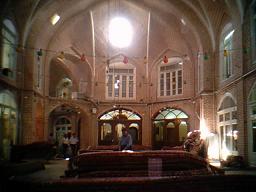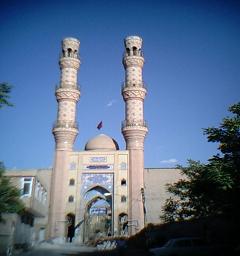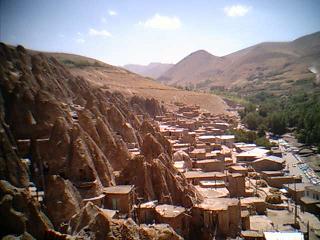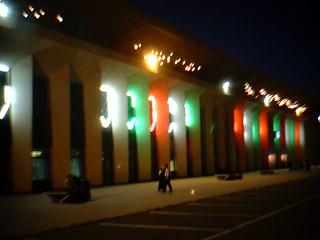 |
|
|
|





 |
Tabriz is the largest city in north-western Iran
with a population of 1.2 million people. Tabriz is situated north of
the volcanic cone of Sahand south of the Eynali mountain. It is the
capital of East Azarbaijan Province.
Historically, the founding of the city is shrouded in mystery. Most
sources mention the Sassanid era, while others believe it to be even
further back in history. After the Turkic invasion of Iran, Tabriz
later became the capital of the Ilkhanate empire from about 1270 to
1305, of the Aq Quyunlu from about 1469 to about 1502, and of the
Safavids from 1502-1548. It also fell under Ottoman rule for some
time during the time of the Safavids.
|
|
|





 |
 |
 |
 |
 |
|
Entrance of Tarbiyat Bazaar |
Bazaar of Carpet |
Masdjed Jaame Tabriz |
Masjed Jaame Tabriz |
Violent earthquakes have wiped out most of the
historic monuments of Tabriz. One important monument that has
survived these earthquakes is the Tabriz Citadel (Ark-e Tabriz or
Ark-e Ælishah), a ruin of vertical book-shaped elements. The Blue
Mosque of Tabriz (Göy-Mæčid), is another important monument in the
city.
Tabriz is where the constitutionalists of Iran was centered during
the early 20th century. An American who died defending the
Constitutional Revolution, Howard Baskerville, is buried in Tabriz.
The famous Iranian historian and philosopher, Ahmad Kasravi, was
born in a nearby village called Hokmavar. Samad Behrangi, a famous
writer and musicians, along with Ali Salimi, Vahid Houseini, and
Bigjeh-Khani were tar specialists from this city.
Daytime temperatures usually reach at least 30 degrees Celsius (high
80s Fahrenheit) in July and August and drop below freezing in
January.
|
|
|
|
|
 |
 |
 |
 |
|
Shah Goli |
Kandovan Place |
Monument of the Poets
(Maqberatolshoara) |
Tabriz Train Station |
Photos: By Myself
Reference of Notes : WikiPedia
|